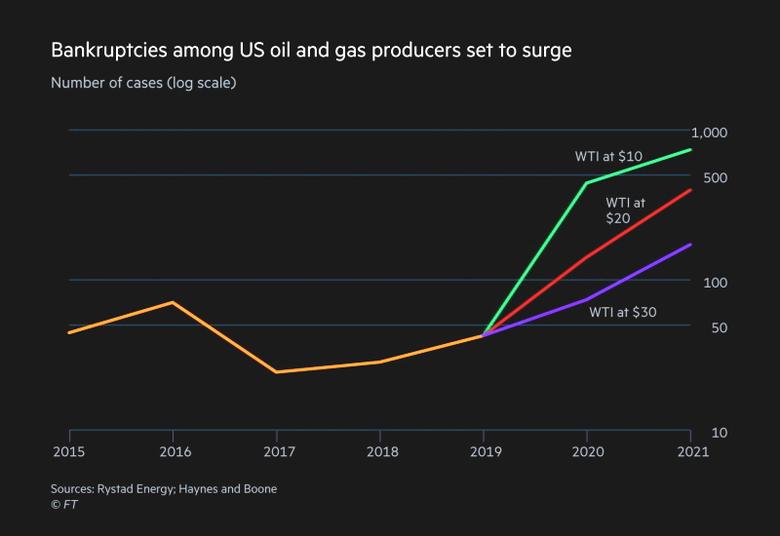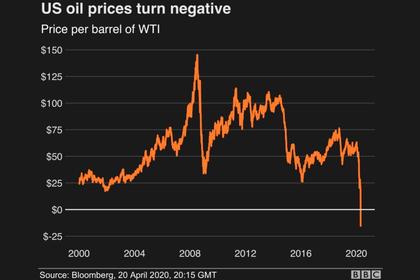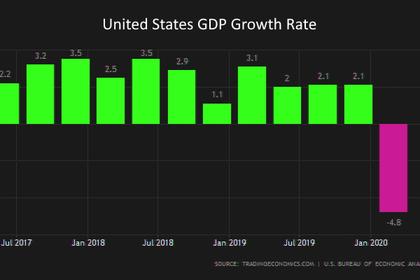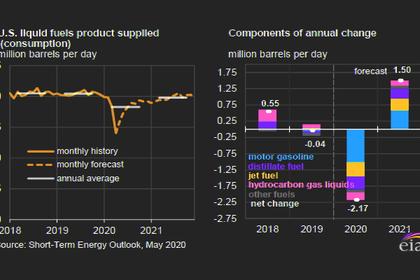
U.S. SHALE OIL LOSS $26 BLN

FT - MAY 25 2020 - The biggest independent shale oil groups in the US reported a record combined loss of $26bn in the first quarter as the sector braces itself for a wave of bankruptcies over the next two years.
The collapse in crude demand brought about by the coronavirus pandemic forced more than $38bn in write-offs among top producers, according to analysis by Rystad Energy, sending net losses tumbling well below an average of $2.9bn in the past six years.
US energy groups have been caught in the eye of the storm as lockdowns aimed at stemming the spread of Covid-19 slashed energy demand and crashed the oil market.
The sweeping impairments reported by the 39 publicly listed US shale oil producers analysed by Rystad — which exclude majors and gas-focused companies — underline the pressure being faced by the industry as a result of the pandemic.
"The bottom line is there is going to be a wave of bankruptcies and restructurings," said Regina Mayor, global head of energy at KPMG.
Analysts predict 250 companies could go bust before the end of next year unless oil prices rise fast enough to start generating cash for producers wilting under punishing debt loads.
A recent rally has taken the price of West Texas Intermediate, the US marker, back above $30 a barrel, having traded in negative territory last month. But it remains down by half since January — and well beneath average break-even oil prices in the shale patch — leaving many more producers teetering on the brink of bankruptcy.
"I don't think $30 oil saves a lot of those producers who are sitting in the emergency room on a gurney waiting on a heart transplant," said Buddy Clark, a lawyer at Haynes & Boone in Houston, Texas. "There are more bankruptcies to come."
Already 17 smaller US oil and gas producers, with total debt of around $14bn, have filed Chapter 11 bankruptcy this year, according to data from Haynes & Boone.
Analysts at Rystad estimate the total could rise to 73 before the year is out. Another 170 would follow next year if prices remain around current levels.
The shale boom has doubled American oil output since 2008 and crude exports have surged, allowing President Donald Trump to boast of US "energy independence".
But a model in which producers rely heavily on borrowed money while delivering meagre returns has caused investor patience to wear thin. The industry was already struggling to generate cash and hold on to investor support in 2019 when WTI averaged $57 a barrel.
Now, with WTI down by around half this year and little access to financing, the pandemic and oil-price crash it caused are set to accelerate defaults, according to rating agency Fitch.
"They were in trouble before Covid even happened," said John Kempf, senior director at Fitch. "There are a couple of pretty big names that are probably going to file for bankruptcy pretty soon."
The amount of bonds outstanding in the US high yield energy sector increased from $68bn to $108bn this year as a handful of big names including Cenovus Energy, Occidental Petroleum, and Apache became "fallen angels", sliding from investment grade into junk territory, according to Fitch.
Energy companies make up 58 per cent of the rating agency's list of the most concerning US issuers in the high yield market. It anticipates a default rate of 17 per cent in high yield energy bonds by the end of the year — roughly on par with the level at the worst point of the last downturn in 2016.
The distress in the sector led to calls for widespread intervention from Washington, with a push for tariffs on imported crude, efforts by a Texas regulator to force oil producers to cut output and calls for federally backed relief packages to be extended to energy producers.
Rising prices in recent weeks — as companies cut supply and lockdowns ease — have lessened the clamour from producers for government support. The president hailed the rise in prices this week in a tweet: "Oil (energy) is back!" he wrote.
Still, the pace of bankruptcies is about to pick up, say those involved in the process.
Ken Coleman, head of US restructuring at law firm Allen & Overy, said the filings are only getting started, with a "wave" of bankruptcies coming this summer. "The question is going to be how long it lasts."
-----
Earlier:











